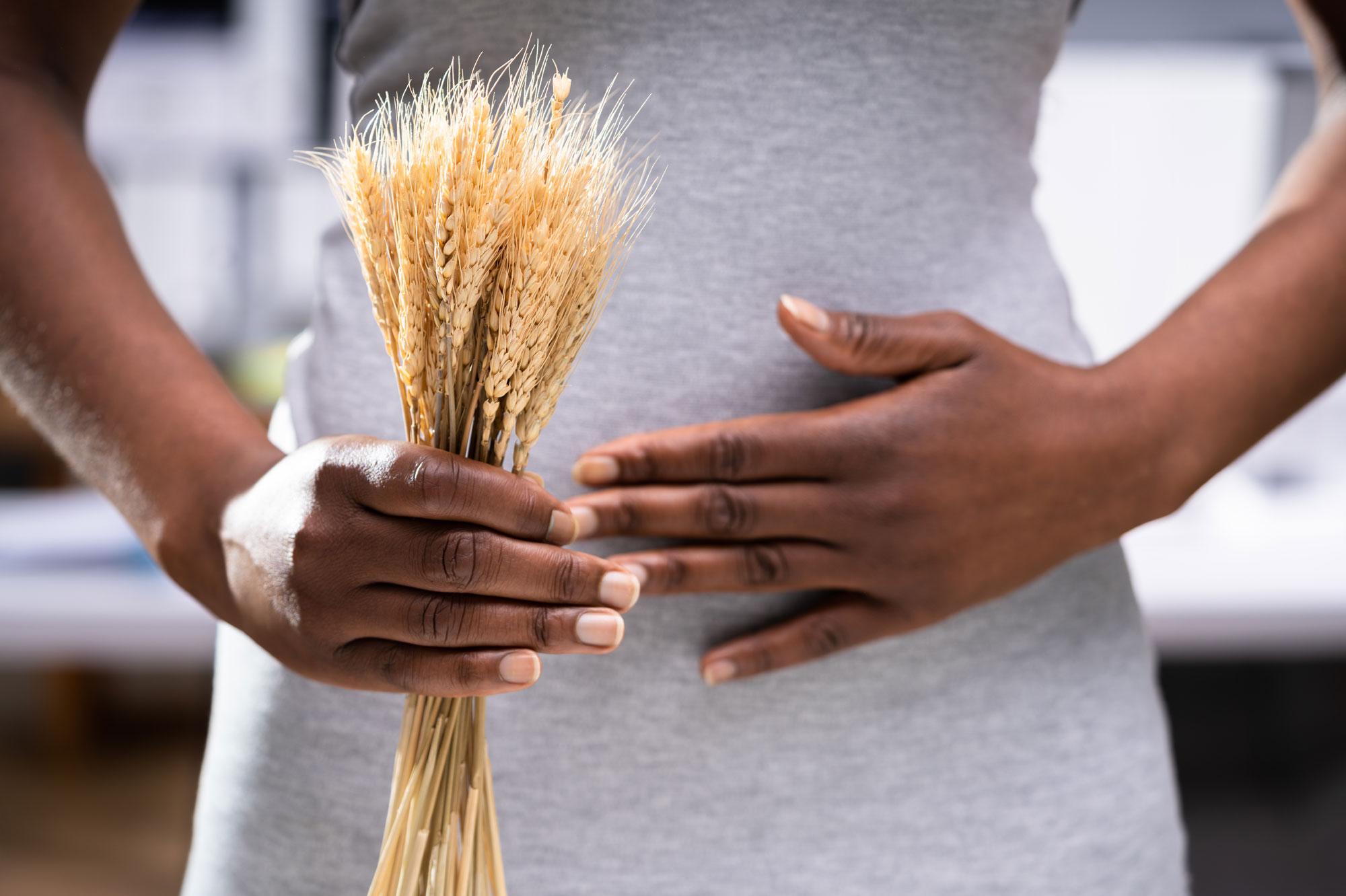Two extra crosses on the lab form: that’s all that’s needed to determine the chronic intestinal disease celiac disease in the blood, says Katrien Wellens, a dietitian specialized in the disease. Yet many cases remain under the radar.
In recent years, there has been increasing attention for the autoimmune disease celiac disease (‘koilia’ is Greek for ‘abdomen’), also known as gluten intolerance. Supermarkets are offering more and more gluten-free products, restaurants are juggling with gluten-free ingredients and nowadays it is no longer really a matter of looking for a gluten-free cookbook.
That is good news for patients with this chronic disease. Eating gluten, a protein that occurs in various grains such as bread and pasta, causes inflammation of the intestinal mucosa. As a result, nutrients can no longer be absorbed properly.
Celiac disease is less rare than originally thought. The number of cases is even increasing. ‘In Belgium, this concerns 1 in 100 to 1 in 200 people with gluten intolerance,’ says Schär dietician Katrien Wellens, who works at the UZA.
Patients who are very sensitive to gluten and therefore have clear complaints are just the tip of the iceberg
–
It is difficult to say whether there are actually more cases than before or if there is simply more attention to detect the disease more quickly. Yet thousands of people with celiac disease have still not received a diagnosis. ‘Patients who are very sensitive to gluten and therefore have clear complaints are just the tip of the iceberg,’ believes Wellens.’
What causes the underdiagnosis of celiac disease?
Wellens: ‘The possible complaints are very diverse, which makes detecting the disease difficult. Celiac disease used to be labeled as a childhood disease with the classic clinical picture being a child with a bulging stomach and complaints such as diarrhea and a poor absorption of certain nutrients. Over the years, we have had to adjust that disease a bit. Today the symptoms can also be: constipation, extreme tiredness, iron deficiency, dental abnormalities, mouth ulcers, painful cracks in the corners of the mouth, bloating, poorly growing children, weight loss or too little gain, sallow skin, dull hair … Often the doctor thinks do not immediately suffer from celiac disease and people with constipation or bloated stomach continue to walk around with their complaints for years. Sometimes they don’t get it until they’re 70e a diagnosis or even never.’
What are the consequences if celiac disease is left untreated?
Wellens: ‘In the case of undiagnosed celiac disease, the complaints either get worse or a deficiency in iron, vitamin B12, folic acid or, in the long term, even osteoporosis develops. Sometimes miscarriages are also due to an iron deficiency due to celiac disease. In children we notice a deviating growth. However, the diagnosis is very simple with a blood sample that measures antibodies for gluten. It only comes down to putting two extra crosses on the lab form for the blood draw. It is important that you have eaten gluten at the time of the blood test.’
Can we attribute celiac disease to a diet that is too one-sided or an industrially manipulated diet?
Wellens: ‘It is true that celiac disease is a disease of affluence, but there is no scientific evidence that industrialized food plays a role. What is striking is that the disease is more common in countries such as Italy, for example, where more pasta is served and therefore more gluten is eaten. But there is no single originator. Presumably several elements and their mutual interaction play a role. For example, certain viruses and stress are also considered. But more research needs to be done on that. One cause that is clearly determinative is hereditary predisposition. Although it does not mean that the presence of certain genes causes the disease without further ado.’

The only possible treatment for celiac disease is the gluten-free diet. How healthy is such a diet?
Wellens: ‘For celiac disease, there is absolute zero tolerance with regard to the gluten-free diet. This has a major impact on the patient and the family. That is why it is very important that you eat a varied diet and that you replace gluten-containing foods wisely. Choose gluten-free breads that are rich in fiber, eat plenty of fruit and vegetables and add nuts and seeds to your diet. In the past, a lot of sugar and fat was often added to gluten-free products to compensate for the loss of gluten, which put patients at a greater risk of being overweight. Nowadays a lot of effort is made to make bread not only tasty, but also healthier. But just like regular food, gluten-free cookies also contain fat and sugar. So don’t eat too much of it.’
In recent years, the diagnosis of ‘non-celiac gluten sensitivity’ has also emerged. A real condition or rather a hype?
Wellens: ‘Gluten sensitivity is not just a hype, it is an exclusion diagnosis. When celiac disease or wheat allergy are excluded, we assume gluten sensitivity. This would concern half to 13 percent of people who are gluten sensitive. These patients often actually feel better when they cut gluten, but the question is whether that is because of the gluten or other substances in wheat that could be the culprit? For example, wheat also contains fructans that cause a lot of problems in people with irritable bowel syndrome. In short, the cause of gluten sensitivity is still a very big question mark.’
Many people without proven celiac disease eat gluten-free because they want to lose weight. A good idea?
Wellens: ‘Of course you will lose weight if you leave out bread, pasta and cookies without replacing them, but if you exchange those products for gluten-free alternatives it will make little difference to your weight. It will only slim down your wallet.’
To help you on your way to a possible diagnosis of celiac disease, Schär created a self-test that can already give a first indication: https://www.schaer.com/nl-be/help-center/symptom-test
Follow Katrien Wellens on Instagram: https://www.instagram.com/simplyglutenfree_katrien/
–


